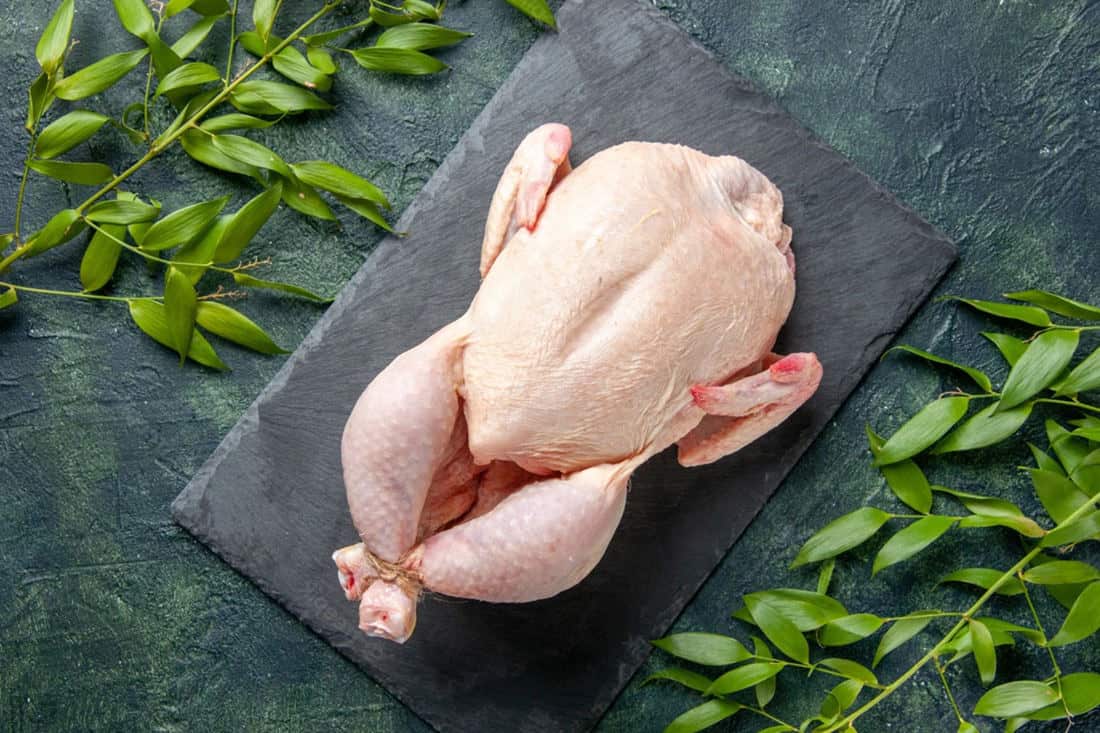Chickens are among the favorites and most sought-after meals that we all love. We can cook it at home, and almost all restaurants have chicken on their menus. On top of everything, chicken is an excellent source of valuable nutrients. It has proteins, vitamins, and minerals like calcium, iron, and selenium.
But we all wonder how many calories are there in chicken? Are we consuming too much of it? In this article, you will find the number and calories plus the nutritional benefits of every part of the chicken. Also, you can discover how you will best store and cook chickens to bring out their potential.
Chicken Breast
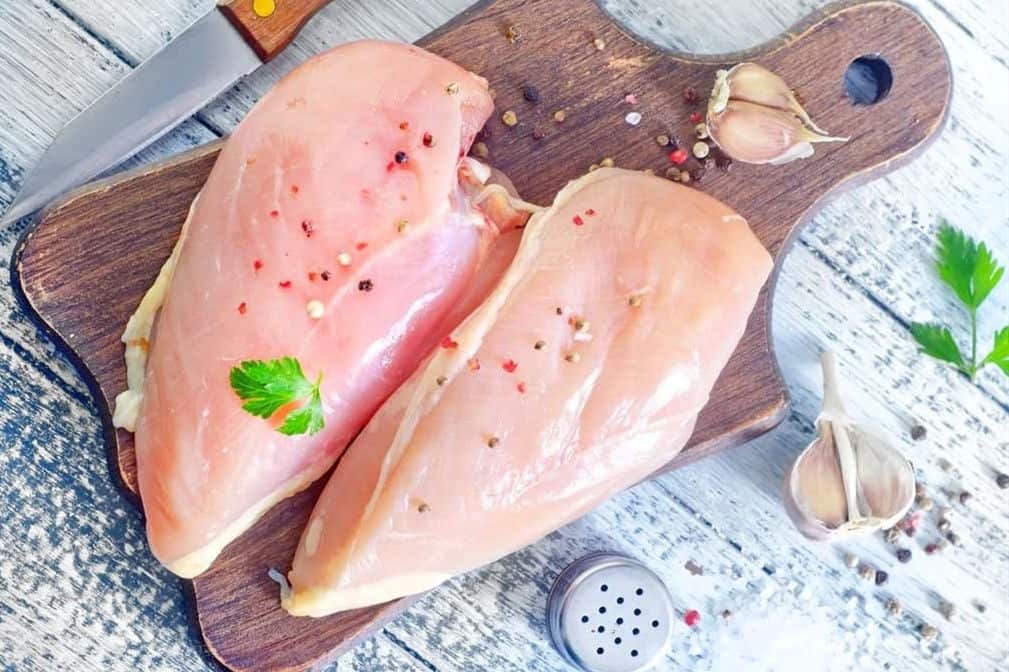
Chicken Breast is one of the famous and crowd’s favorite cuts of chicken. In general, this chicken part has a higher protein level and low components of fat. So, this will be perfect if you want to reduce weight. Along with that, chicken breast is a top-grade source of lean protein, a protein that does not have too much accompanying fat.
Plus, experts say that those who include lean protein in their regular diet will probably have maintained muscle mass and healthy metabolism. Chicken Breasts are cheaper and versatile, making them a valuable and great food that you want to include in your balanced and nutritious diet.
To help you, we list here some of the nutritional components found in chicken breast.
Calories
As provided by the United States Department of Agriculture, for every 100 grams of cooked chicken breast with skin, there are 197 calories. Unless the chicken breast is prepared with any breading and seasonings, it has no starch or sugar. So, chicken breasts have zero carbohydrates. The total estimate of glycemic load found in chicken breast is also zero.
| State | Skin | Calories (100g) |
|---|---|---|
| Raw | Skinless | 115 |
| Cooked | Skinless | 165 |
| Raw | With skin | 170 |
| Cooked | With skin | 197 |
Fat
For a portion of 100 grams of chicken breast, there are 3.17 grams of total lipid fat. Also, chicken breasts have 0.992 grams of total saturated fatty acids, 1.21 grams of total monounsaturated fatty acids, and 0.764 grams of total polyunsaturated fatty acids.
Proteins, Minerals, & Vitamins
Along with that, chicken breasts contain higher elements of minerals and vitamins. It is an excellent source of niacin, phosphorus, selenium, and vitamin B6.
Eating chicken breast is an efficient way of meeting the body’s protein with less fat intake for people who prefer meat. Naturally, chicken breasts also do not have too much sodium. But still, this depends on the cooking method.
Chicken Drumstick
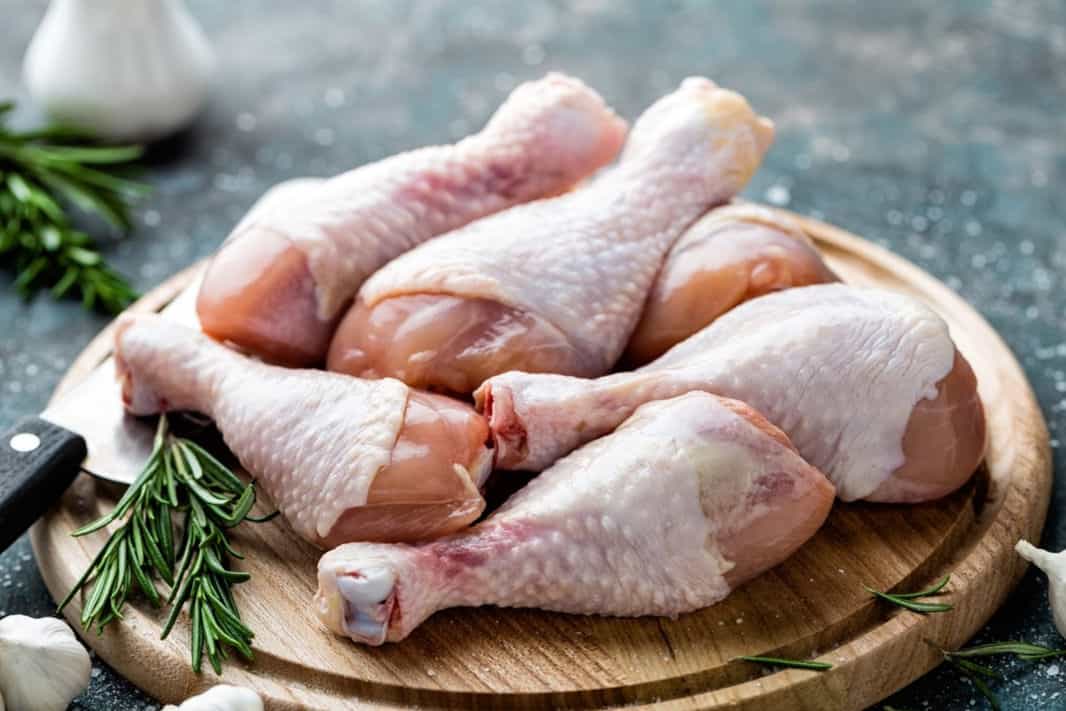
Chicken drumsticks are a powerhouse combination of amino acids, essential protein, minerals, and vitamins. However, the cooking method you choose to prepare your chicken drumsticks connects the health and nutrition benefits you will get.
Breaded and seasoned fried drumsticks have considerable amounts of cholesterol and fats than roasted drumsticks. Shedding the skin of the chicken drumstick before you eat it will help preserve its nutrition profile.
Calories
As listed by the United States Department of Agriculture, for every 100 grams of a cooked chicken drumstick with skin, there is a 216-calorie count. In addition, roasted chicken drumsticks do not have any carbohydrates. It only contains 0.1 gram in sugar form.
| State | Skin | Calories (100g) |
|---|---|---|
| Raw | Skinless | 125 |
| Cooked | Skinless | 175 |
| Raw | With skin | 180 |
| Cooked | With skin | 216 |
Fat
Chicken drumsticks have 9.202 fats. There are 2.86 grams of total saturated fatty acids, 4.75 grams of total monounsaturated fatty acids, 1.52 grams of total polyunsaturated fatty acids, and 0.072 full trans of fatty acids.
Proteins, Minerals, & Vitamins
Chicken drumsticks have vital protein elements. With only one piece of a chicken drumstick, it has proteins amounting to 18.2 grams. In addition, you can get your dose of minerals such as selenium in chicken drumsticks.
Selenium is a dietary mineral that creates powerful antioxidants that will help you combat cancer and heart disease. On top of that, chicken drumsticks also contain the zinc that we need for healthy immune function, cell division, and wound healing. A 100 gram of chicken drumstick also has 5.97 mg of niacin that will help you digest foods and keep a healthy appetite.
Chicken Leg
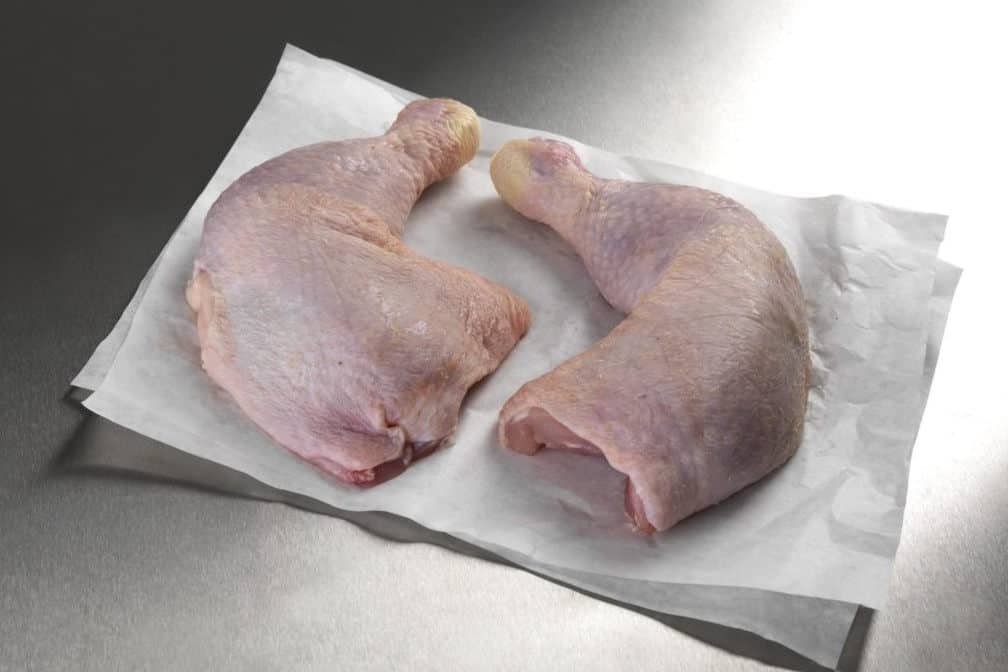
The back, drumstick, and thigh are the main components of the chicken leg. Chicken legs are a fantastic source of crucial nutrients since they have iron and zinc. Undoubtedly, these are all significant for boosting the immune system.
On top of that, although chicken legs do not offer much meat, it has reasonable amounts of collagen. Collagen is one of the most abundant proteins found in the human body. These collagen components provided by chicken legs will aid in relieving joint pains, boost skin health, and avoid bone loss.
Calories
Overall, the United States Department of Agriculture states that a chicken leg with skin contains 232 calories. Roasted chicken legs do not have carbohydrates, fiber, or sugar components.
| State | Skin | Calories (100g) |
|---|---|---|
| Raw | Skinless | 130 |
| Cooked | Skinless | 174 |
| Raw | With skin | 190 |
| Cooked | With skin | 232 |
Fat
A 100-gram chicken leg has significant amounts of fat. There are 8.99 grams of fat. Further, chicken legs have 2.45 grams of saturated fatty acids, 3.56 grams of monounsaturated fatty acids, and 1.86 grams of polyunsaturated fatty acids.
Proteins, Minerals, & Vitamins
You could get 61.9 grams of protein with just a single chicken leg. Plus, chicken legs are a wellspring of minerals like selenium. Based on science, selenium will help reduce certain types of cancer, minimize heart disease risk, prevent mental decline, and boost the overall immune system.
Chicken legs also have niacin. Niacin is a mineral that will reduce blood pressure, support skin health, enhance cognitive and mental functions, and boost fat blood levels. You can also get other vital nutrients in chicken legs: iron, pantothenic acid, phosphorus, vitamin B6, and zinc.
Chicken Thigh
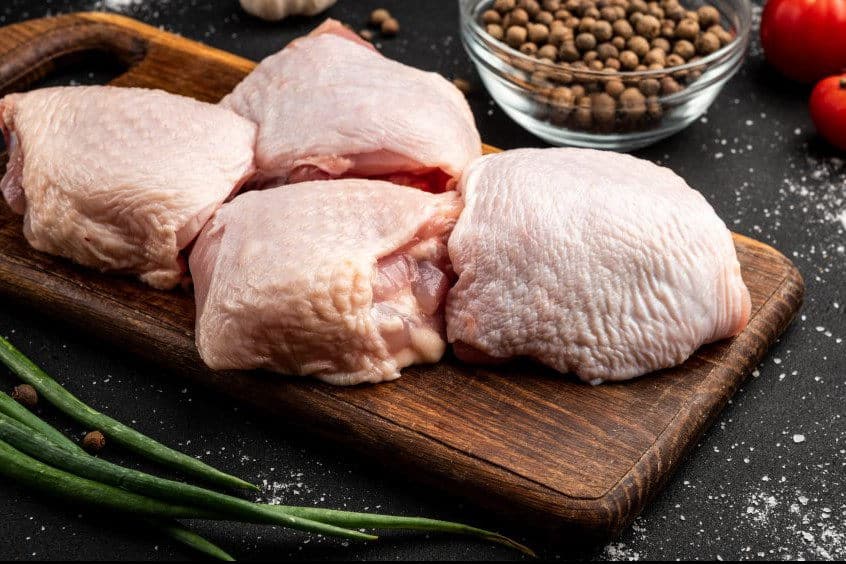
Compared to chicken breasts, chicken thighs have higher concentrations of cholesterol and fats. However, the cooking method for chicken will all make the difference. As we all can relate, we prefer a bite of flavorful and juicy chicken thigh at times.
If you are determined to choose healthier options, you can opt to prepare and cook chicken thighs in a much healthier way. You can opt to reduce the use of added oil and go baking, grilling, and stir-frying.
Also, you can go salt-free and mix and match your chicken thighs with grains and vegetables. That way, you can balance out the essential nutrients and unleash the staying power of chicken thighs.
Calories
For a 100-gram cooked chicken thigh with skin, there are 280 calories. A single piece of rotisserie chicken thigh contains 135 calories. Like other cuts of chicken, you cannot find carbohydrates, fiber, or any sugar in the chicken thigh.
| State | Skin | Calories (100g) |
|---|---|---|
| Raw | Skinless | 125 |
| Cooked | Skinless | 209 |
| Raw | With skin | 210 |
| Cooked | With skin | 280 |
Fat
As mentioned earlier, chicken thighs have higher fat concentrations than chicken breasts. So, people who desire to lose weight prefer to have chicken breasts than thighs. A 100-9ram portion of chicken thighs has 10.7 grams. In addition to that, they have 2.78 grams of saturated fatty acids, 4.73 grams of monounsaturated fatty acids, and 1.62 polyunsaturated fatty acids.
Proteins, Minerals, & Vitamins
When it comes to the significant contributions of protein, we can never underestimate the power of chicken thighs. With only one chicken thigh, there are 16.9 grams of available protein.
Chicken thighs are a boatload of essential minerals such as niacin and selenium. Also, it is an excellent source of phosphorus. Phosphorus is required to grow, maintain, and repair all our cells and tissues. Further, it paves the way for the production of genetic building blocks: DNA and RNA.
Chicken Wings

Chicken wings hold beneficial vital nutrients. The product has massive amounts of vitamins, such as vitamins A & B. These vitamins strengthen your immune system and help you resist cough and cold. On top of that, these contribute to preventing the risk of developing heart disease and restoring skin elasticity.
The EU Poultry declares that chicken wings have higher concentrations of protein elements. Plus, the meat almost does not have any carbohydrates. Along with vitamin A &D, chicken wings have vitamins D & K. It also comes with many vital minerals such as calcium and iron.
Calories
Raw skinless Chicken have 155 grams of calories. But a 100-gram roasted chicken wing with skin has higher calories: 290 calories. However, these roasted chicken wings do not bottle up carbs, fiber, and sugar.
| State | Skin | Calories (100g) |
|---|---|---|
| Raw | Skinless | 155 |
| Cooked | Skinless | 203 |
| Raw | With skin | 220 |
| Cooked | With skin | 290 |
Fat
Over 16.9 grams of total lipid or fats in chicken wings can be found. In addition, chicken wings have 4.98 grams of saturated fatty acids, 7.71 grams of monounsaturated fatty acids, and 3.59 grams of total polyunsaturated fatty acids.
Proteins, Minerals, & Vitamins
Altogether, chicken wings are a powerhouse combination of proteins, minerals, and vitamins. A single piece of chicken wings with skin already has 20.2 grams of proteins. Further, this meat contains valuable nutrients such as niacin, vitamin B6, and phosphorus.
Here’s a quick summary of the overall calories, nutrients, and minerals found in every 100-gram serving of chicken.
| Nutrients in Chicken (Raw, Skinless) | Breast
(100 grams) |
Drumstick (100 grams) | Legs
(100 grams) |
Thigh
(100 grams) |
Wing
(100 grams) |
| Calories | 115 | 125 | 130 | 125 | 155 |
| Carbohydrates | 0g | 0g | 0g | 0g | 0g |
| Fat | 3.17g | 11.5g | 8.99g | 10.7g | 16.9g |
| Fiber | 0g | 0g | 0g | 0g | 0g |
| Niacin | 12.1mg | 5.97mg | 6.03mg | 5.44mg | 6.32mg |
| Protein | 30.5g | 25.6g | 24g | 24.1 | 23.8g |
| Selenium | 28.4µg | 25.7µg | 25.7µg | 23.1µg | 25.5µg |
| Sodium | 52 mg | 392mg | 98mg | 335mg | 98mg |
| Sugar | 0g | 0.12g | 0g | 0g | 0g |
Source: United States Department of Agriculture Food Data Central
Other Chicken Cuts
All of us will relate that chicken breasts, drumsticks, legs, thighs, and wings are the most sought parts of the chicken. However, other cuts have gained popularity and have been made available. We collect the number of calories in further chicken cuts amounting to 100 grams or 3.5 ounces.
- Back:137 calories
- Chicken Tenders:263 calories
- Dark Meat:125 calories
- Light Meat:114 calories
Health Benefits of Eating Chicken
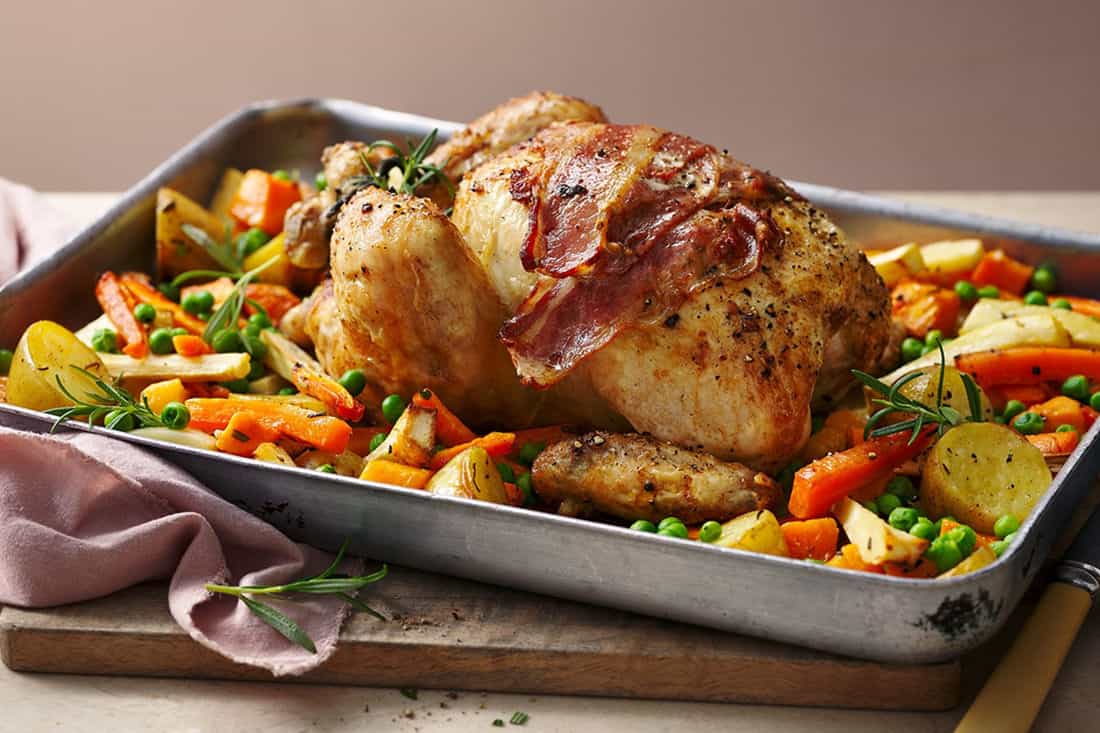
Chicken has impressive health benefits. This meat contains higher sources of protein. On top of that, chicken is scientifically proven to aid in losing weight. Other health benefits of chicken are its promising components in battling cancer, controlling blood pressure, and reducing cholesterol.
It is a natural anti-depressant. Further, it is an excellent source of niacin for promoting fair and healthy skin. Here we curate and list down the top-grade health benefits of eating chicken.
Promotes Cognitive Health
Niacin components of chicken can help in promoting better cognitive health while aging. Experts said that niacin protects our brain cells from injury and stress.
Those with niacin deficiency are more susceptible to cognitive declines such as dementia and memory loss. So, eating chicken will boost your niacin intake, which will help combat other cognitive malfunctions such as Alzheimer’s disease.
Reinforce Healthy Bones
Chicken also reinforces healthy joints and bones. A recent study suggests that dietary proteins found in chicken can boost calcium. Together, this will help in protecting our bones. Plus, proteins found in chicken aid in supporting bone metabolism and calcium retention.
Plus, chicken is an excellent source of lean proteins that contain amino acids. These amino acids help our bodies to build muscle tissues. Experts also show that having high protein levels will help us maintain our bone mineral density.
Without a doubt, eating chicken will help us build healthier bones and stronger muscles. It can further decrease the risk of having injuries and diseases like osteoporosis.

Minimize the Risk of Cardiovascular Disease
Naturally, chickens have minerals like selenium. Scientists stated that selenium aids in protecting cell membranes from radical damage and prevents sticking blood platelets.
These conditions increase the risk of cardiovascular disease, commonly known as heart disease. So, having chicken in your regular food diet will help you combat the risk of having cardiovascular disease in the long run.
On top of that, those meals like chickens rich in protein can help you feel fuller even though you eat less. Later, this will assist you in managing your weight. Undoubtedly, a healthier weight will minimize the risk of having heart disease.
Boosts Muscle Growth
Further, chicken has a higher concentration of proteins that promote muscle growth. Suppose you incorporate chicken in your diet combined with a strength training and exercise program. In that case, this will help your body to build and develop muscle mass. Research suggests that older people who suffer muscle mass losses and strength have higher mortality rates.
Enhance Better Mood
Chicken is also a fountain of amino acids like tryptophan linked to serotonin, also known as the excellent vibe hormone in our brains. Tryptophan will not make you happy instantly. But research shows that constant intake of these amino acids will help boost your serotonin levels when combined with other elements.
Reduce the Risk of Thyroid Disease
Now we know that chicken also has valuable minerals like selenium. This selenium found in the thyroid will regulate the gland’s functions. Those who do not have sufficient selenium intake are more likely to have autoimmune thyroid conditions: Graves’ disease and Hashimoto’s disease.
You may watch this video to learn the top ten health benefits of eating chicken to round it up.
Chicken Preparation
While all chicken parts have varying calories and nutritional components, we cannot deny this one absolute truth. That is, the way of preparing chickens can miraculously alter the nutrition facts. In general, boiling, broiling, and roasting are the healthiest preparation methods for chicken.
On the other hand, breading, coating, and seasoning the chicken with flour or other ingredients can increase the carbohydrate component. Further, frying the chicken or sauteing it with oil and butter will add substantial calories and fats.
Healthier Options for Chicken
Different factors like cooking methods and preparation are crucial to how healthy and nutritious any chicken-based meal would be. Drumsticks and thighs, both darker cuts, have higher calorie content levels than lighter cuts such as the chicken breast.
Further, the rule of thumb is to keep the chicken skin while frying can also add saturated fats. Whether we like it or not, some chicken preparations are much healthier than other ways. For this reason, we list down here the more beneficial cooking methods and best choices for chicken.
- Baked Chicken: The great news is baking chicken, whether for weekend dinners, brunch, or lunch with friends, is one of the best and healthier options for doing your chicken.
- Since it has low calories and fat components, baked chicken is the perfect choice for those who desire to reduce or lose weight. Nonetheless, you will still not miss out since baked chicken contains vital and rich vital nutrients.
- Grilled Chicken: Grilling the chicken are one of the healthiest and quickest way to excite and boost your protein intake. Plus, you can throw and combine some vegetables into the grill to round up your sumptuous meal.
- Stir-fried chicken: Stir-fried chicken on top of the oil and your favorite vegetables can be your ultimate go-to for a snack. For sure, these have high fibers and a protein-packed meal.
Do you want to know and discover healthier chicken recipes? Then, you may watch this video.
Unhealthier Options for Chicken
Although chickens are an excellent combination for a nutritious diet, some cooking methods and types of chicken are unhealthy. This is because they have higher calories, sodium, or fat. To guide you, we collect down some of the few types of chicken that you need to limit as much as possible.
- Chicken Lunch Meat: Chicken Lunch Meat is processed meats pumped full of extra sodium. Most often than not, manufacturers include unhealthy preservatives into this processed meat to extend its shelf life.
- Fried Chicken: Deep-fried or breaded fried chicken typically has higher carbohydrates, calories, and unhealthy fats.
- Rotisserie Chicken: Rotisserie chickens found in shops and markets are usually brined or heavily seasoned. Coatings, breading, and seasoning can boost the amount of sodium in the chicken’s final product.
Chicken Storage and Food Safety
There are essential things that you need to remember when you buy chicken. You can store and place the chicken in the refrigerator for one to two days from purchasing it. On top of that, you can opt to keep it in your freezer for nine months from the date you buy it.
For food safety, always cook the chicken at the proper internal temperature. Usually, chickens baked in the oven can reach up to 375 degrees Fahrenheit. According to the Food Safety and Inspection Service, the minimum internal temperature for chicken is 165 degrees.
Experts advised that a thermometer helps measure the temperature of the chicken. If you want to do this, it will help place your thermometer on the thick part of the chicken. While you are measuring, ensure that the thermometer will not touch the bones of the meat.
Remember that it should reach only an internal temperature of 180 degrees Fahrenheit for a whole roasted chicken. Also, drumsticks, legs, thighs, and wings should reach 180 degrees Fahrenheit. On the other hand, boneless chicken can only strike until 170 degrees Fahrenheit.
Further, it is recommended to clean any surfaces while preparing raw chickens, including the boards and knives that you will use. On top of that, according to experts, it would be much better if you use plastic cutting boards when preparing chicken. Plastic cutting boards can be quickly placed in a dishwasher and cleaned at higher temperatures.
Things to Avoid

While chicken has impressive health and nutritional benefits, consuming too much or overeating is never good. We need to avoid or watch out for when it comes to preparing, cooking, and eating chickens.
The United States Department of Agriculture strongly emphasizes that we should limit our intake of chicken to two to six and a half ounces of protein daily. However, this can change since more physically active people need more proteins.
In addition, proper storage and the right way of cooking the chicken can help prevent the risk of foodborne diseases or illnesses. Suppose you leave the chicken to sit out for extended periods while cooking it. In that case, this can accumulate bacteria and germs. This can seriously make you ill.
Also, chickens are not suitable for plant-based diets since they are animal proteins. People who have kidney disease should be meticulous. They should not have a high protein intake.
Even though chickens have lean protein, this does not change that chickens still have massive amounts of cholesterol. Suppose you have a high risk for cardiovascular or heart disease or are advised that you need to have a low-cholesterol diet.
It will help if you pay attention and monitor the cholesterol components of chickens that you buy. However, one can never replace the advice of a physician.
The Bottom Line
Indeed, chicken is rich-filed and has a boatload of valuable nutrients beneficial to your health. Nonetheless, choosing the type of chicken you would eat and consume is crucial as some varieties are healthier than others.
Further, you may switch to other cooking methods such as steaming, grilling, baking, and stir-frying. You will never go wrong when you finally discover how to combine chicken with other protein-rich foods.
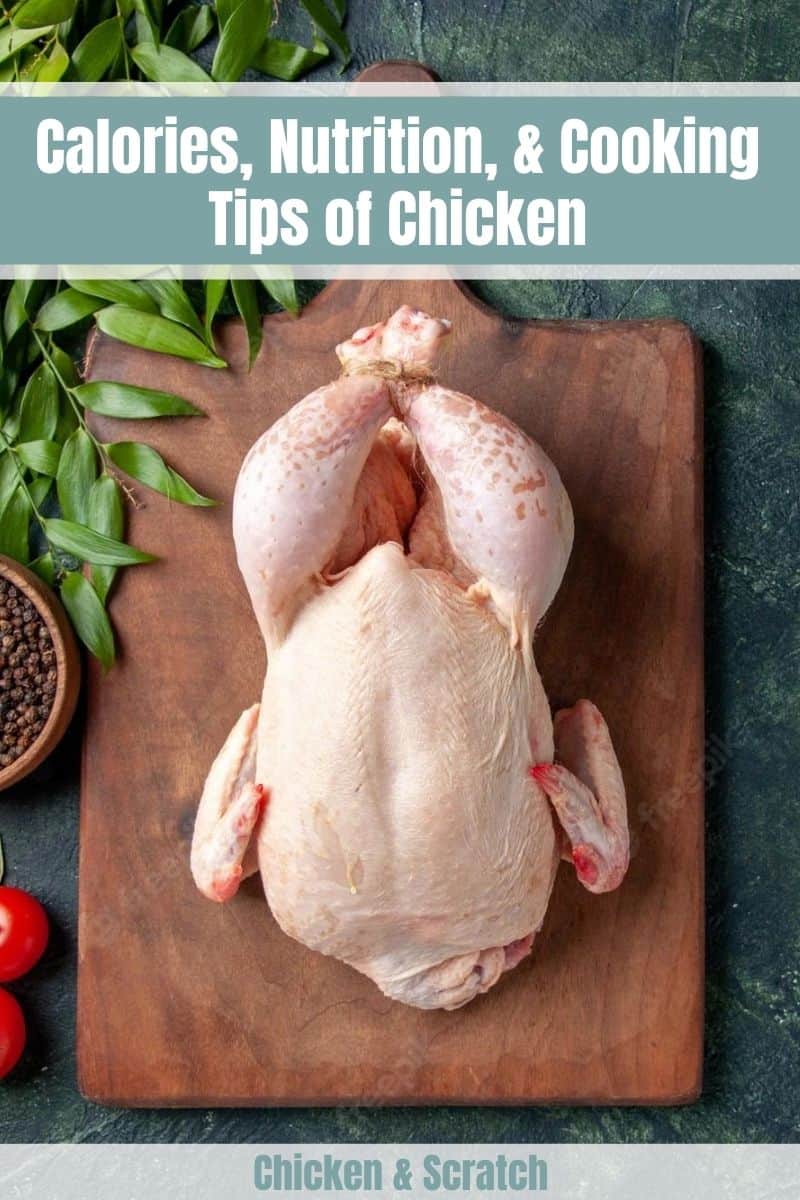

Joseph Hudson has been raising chickens for over 15 years. In 2018, he completed the Agriculture & Natural Resources program at Mt. San Antonio College. He currently raises over 1400 chickens on his 7.5-hectare farm. He keeps sharing his experience on raising healthy and happy chickens on Chicken Scratch The Foundry.
